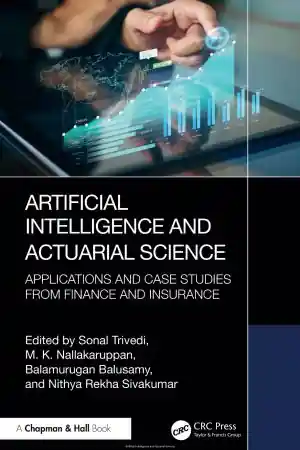
R Data Mining: Implement data mining techniques through practical use cases and real world datasets
- Length: 442 pages
- Edition: 1
- Language: English
- Publisher: Packt Publishing
- Publication Date: 2017-11-29
- ISBN-10: 1787124460
- ISBN-13: 9781787124462
- Sales Rank: #854218 (See Top 100 Books)
Mine valuable insights from your data using popular tools and techniques in R
About This Book
- Understand the basics of data mining and why R is a perfect tool for it.
- Manipulate your data using popular R packages such as ggplot2, dplyr, and so on to gather valuable business insights from it.
- Apply effective data mining models to perform regression and classification tasks.
Who This Book Is For
If you are a budding data scientist, or a data analyst with a basic knowledge of R, and want to get into the intricacies of data mining in a practical manner, this is the book for you. No previous experience of data mining is required.
What You Will Learn
- Master relevant packages such as dplyr, ggplot2 and so on for data mining
- Learn how to effectively organize a data mining project through the CRISP-DM methodology
- Implement data cleaning and validation tasks to get your data ready for data mining activities
- Execute Exploratory Data Analysis both the numerical and the graphical way
- Develop simple and multiple regression models along with logistic regression
- Apply basic ensemble learning techniques to join together results from different data mining models
- Perform text mining analysis from unstructured pdf files and textual data
- Produce reports to effectively communicate objectives, methods, and insights of your analyses
In Detail
R is widely used to leverage data mining techniques across many different industries, including finance, medicine, scientific research, and more. This book will empower you to produce and present impressive analyses from data, by selecting and implementing the appropriate data mining techniques in R.
It will let you gain these powerful skills while immersing in a one of a kind data mining crime case, where you will be requested to help resolving a real fraud case affecting a commercial company, by the mean of both basic and advanced data mining techniques.
While moving along the plot of the story you will effectively learn and practice on real data the various R packages commonly employed for this kind of tasks. You will also get the chance of apply some of the most popular and effective data mining models and algos, from the basic multiple linear regression to the most advanced Support Vector Machines. Unlike other data mining learning instruments, this book will effectively expose you the theory behind these models, their relevant assumptions and when they can be applied to the data you are facing. By the end of the book you will hold a new and powerful toolbox of instruments, exactly knowing when and how to employ each of them to solve your data mining problems and get the most out of your data.
Finally, to let you maximize the exposure to the concepts described and the learning process, the book comes packed with a reproducible bundle of commented R scripts and a practical set of data mining models cheat sheets.
Style and approach
This book takes a practical, step-by-step approach to explain the concepts of data mining. Practical use-cases involving real-world datasets are used throughout the book to clearly explain theoretical concepts.
Table of Contents
Chapter 1: Why to Choose R for Your Data Mining and Where to Start
Chapter 2: A First Primer on Data Mining Analysing Your Bank Account Data
Chapter 3: The Data Mining Process – CRISP-DM Methodology
Chapter 4: Keeping the House Clean – The Data Mining Architecture
Chapter 5: How to Address a Data Mining Problem – Data Cleaning and Validation
Chapter 6: Looking into Your Data Eyes – Exploratory Data Analysis
Chapter 7: Our First Guess – a Linear Regression
Chapter 8: A Gentle Introduction to Model Performance Evaluation
Chapter 9: Don’t Give up – Power up Your Regression Including Multiple Variables
Chapter 10: A Different Outlook to Problems with Classification Models
Chapter 11: The Final Clash – Random Forests and Ensemble Learning
Chapter 12: Looking for the Culprit – Text Data Mining with R
Chapter 13: Sharing Your Stories with Your Stakeholders through R Markdown
Chapter 14: Epilogue
Chapter 15: Dealing with Dates, Relative Paths and Functions







